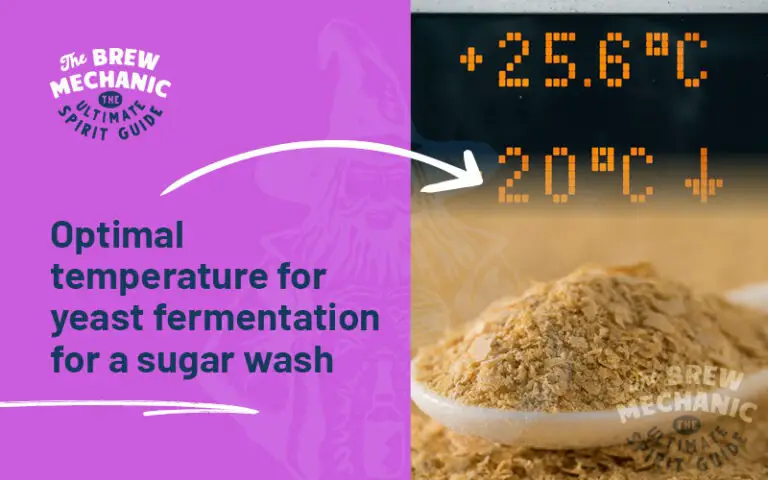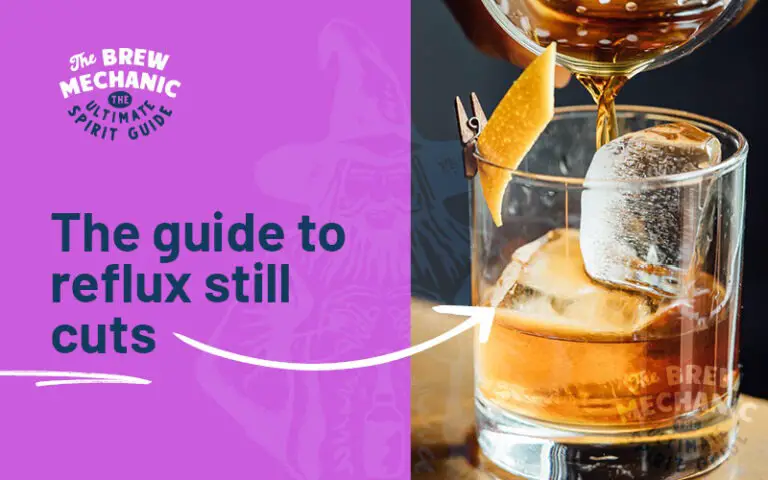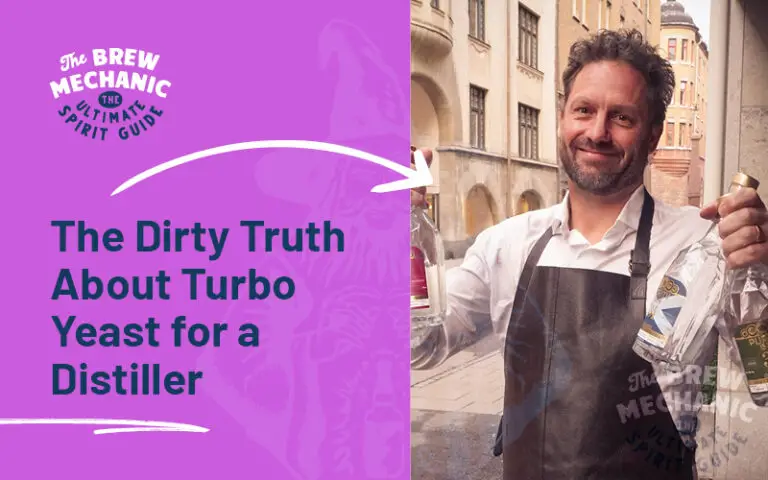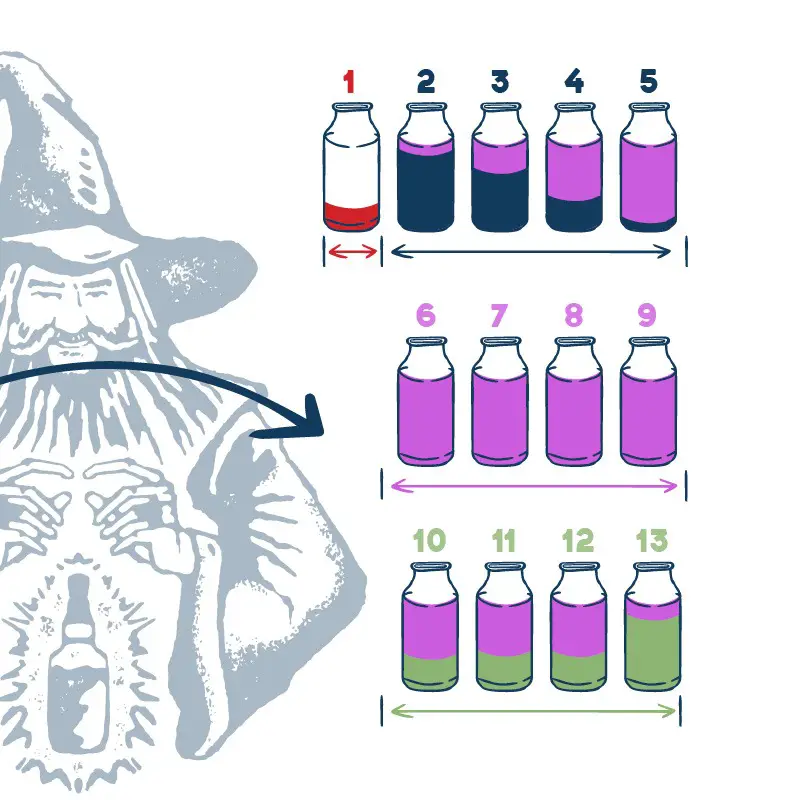How to Avoid Methanol in Distilling? Our Alcohol distillation process
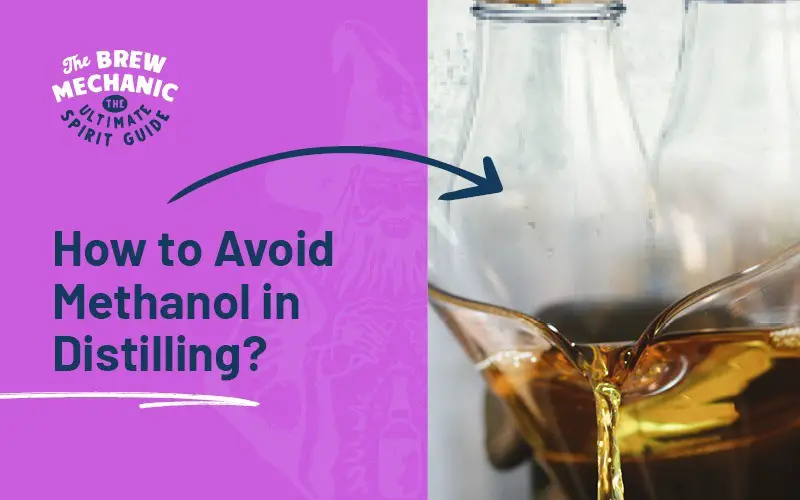
When learning to distil alcohol, there is always something on the back of your mind… Methanol! Our main thing is to learn how to avoid methanol in distilling. We all know how bad methanol poisoning is and its dangerous side effects.
You can’t avoid methanol as it is a byproduct of distilling. What must be learned, is the temperature boiling points for the distilling cuts. There is where you can remove the amount of methanol (foreshots) and heads from each batch during the distilling process.
Methanol has a lower boiling point (64°C / 147.2°F ) thus this becomes the foreshots and heads (77.1°C or 170.8°F), and this should be thrown away!
Understanding the methods of how to avoid methanol in distilling is crucial for both the safety and quality of the distilled product. Here are the boiling points for the cuts.
| Acetone – Foreshots | 56.6°C or 133.8°F |
| Methanol – Foreshots | 64°C or 147.2°F |
| Ethyl Acetate – Heads | 77.1°C or 170.8°F |
| Ethanol Range – Hearts | 78.3 > 81.5°C or 172.9 > 178.7°F |
| 2 Proponal – Tails | 82°C or 179.6°F |
| 1 Proponal – Tails | 97°C or 206.6°F |
| Fuesel oils – Tails | 94 > 95°C or 201.2 > 203°F |
Download our Distilling Cuts Chart here
Yes I want this epic PDF plus get tips and tricks! You will be joining our distilling mail list. 🙂
Reflux Still Method: A Safe Approach to make alcohol
The reflux still method is highly recommended for beginner distillers due to its effectiveness in reducing methanol content.
Why is that? Well, the key factor is the use of a sugar wash during the fermentation process to the distilling. The sugar wash during the ferment can’t produce methanol due to its chemical breakdown. It is impossible.
This method is not only safer but also simpler for beginners to manage and control.
But the foreshots and heads should be removed (discard) in the distillation process to produce ethanol (alcohol) as these are undesirables and DO NOT taste good.
Despite no methanol risk, it is still essential to perform distilling cuts of foreshots, heads, hearts, and tails. These cuts ensure the removal of undesirable components and impurities, further enhancing the safety and quality of the distilled product.
We are all about safety for you!
Pot Still Method: Caution with Fruit Mashes have methanol content
The pot still method, often used for its simplicity and traditional approach, can lead to higher methanol levels, especially when using mashes that contain fruit. These are the original stills that make moonshine. The yeast mixed with the fruit pectin naturally produces methanol during fermentation, which will then be carried over into the distilled spirit.
Do you know orange juice contains methanol? The average presence of methanol is 140 mg/L1.
The pot still method requires careful attention and expertise to ensure the safe removal of methanol through precise cuts during distillation.
For beginners, the complexity of managing methanol levels in fruit mashes can be challenging. Therefore, the reflux still method with a sugar wash is a safer and more straightforward option for those starting in the world of distillation.
Best Practices for Beginner Distillers Dealing with Methanol and Ethanol
The key to success lies in choosing the right method and understanding the process thoroughly. The reflux still method with a sugar wash is an excellent starting point due to no methanol risk and a relatively straightforward process. Additionally, beginners should:
While methanol in distilling is a serious concern, it can be effectively managed and minimised using the right methods and practices. The reflux still method with a sugar wash is particularly suitable for beginners, offering a safer and simpler approach to distillation.
A simple way to know if you presence of methanol or foreshots in your alcohol is by lighting a match to it and if there is a blue flame… Your alcohol alcohol contains methanol from not separating your cuts properly.
Simple Chemical breakdown of a sugar wash brew
A sugar wash is a wash made up of sugar, yeast, and nutrients. Start with opening density, allow to ferment to the required density then stopped by adding a coagulant. You can also determine the amount of alcohol expected from the batch by simply subtracting the opening SG from the final SG x Factor = alcohol.
The Importance of How to Avoid Methanol in Distilling
It is very simple to learn how to avoid methanol in distilling, you must understand distilling cuts and boiling temperatures that produce methanol and ethanol. Once you follow the guidelines for the boiling points such as foreshots, heads, hearts and tails. There will be no concentration of methanol in the final product of distillate.
We would highly recommend discarding the foreshots and heads to remove any possibility of undesirables in your alcohol.
Download our Distilling Cuts Chart here
Yes I want this epic PDF plus get tips and tricks! You will be joining our distilling mail list. 🙂
Last Updated on July 18, 2023 by The Brew Mechanic
Disclosure: I may receive affiliate compensation for some of the links below at no cost to you if you decide to purchase a product or service. You can read our affiliate disclosure in our privacy policy. The information provided is for entertainment only.

With 35 years of knowledge of being a chemical engineer in alcohol manufacturing plants, my mission is to teach the next generation of home distilling alcohol brewers at a supernatural speed.
My reviews are based on real-life experiences with reflux stills, sugar wash, troubleshooting and mystical chemical reactions.


